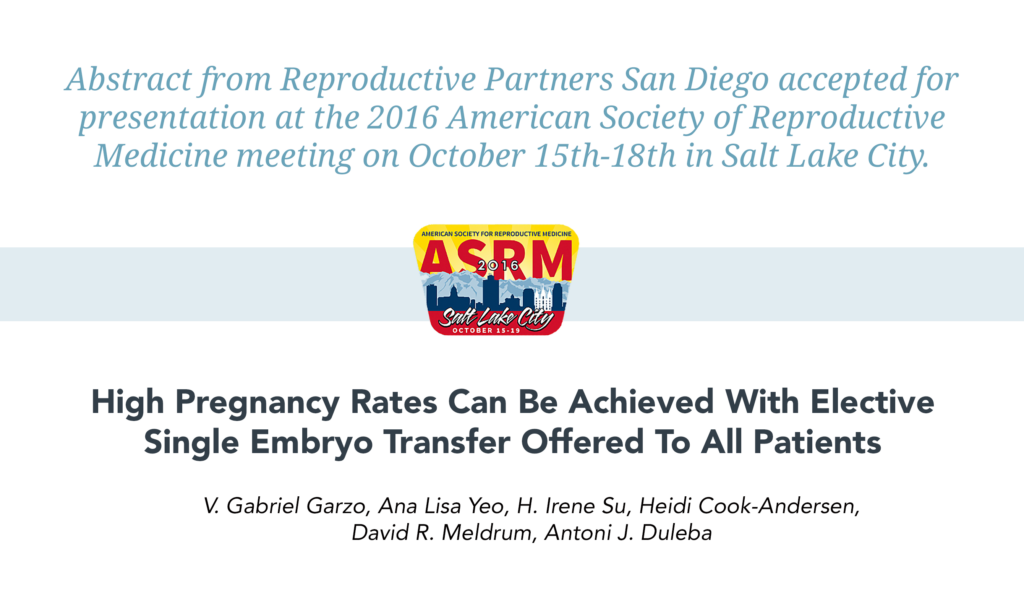
Multiple pregnancies are considered the main complication of IVF. Reluctance to perform elective single embryo transfers (eSET) stems from concerns that pregnancy rates may be unacceptably low for patients and clinicians. This study evaluated success rates of eSET in a single university-affiliated IVF program.
Retrospective review.
All patients undergoing IVF in 2014 and with at least two blastocysts were offered eSET, irrespective of age or other prognostic factors at the time of their first embryo transfer (fresh or frozen). All embryo transfers were performed under ultrasound guidance. Clinical pregnancies were verified by identification of gestational sac(s) using transvaginal ultrasound at > 6 weeks of gestation. Statistical analysis included chi-square test and modified Wald method (to identify 95% Confidence Intervals).
Among 226 first embryo transfers eSET was performed in 181 cases (80%). Preimplantation Genetic Screening was performed in 97 cases (54% of eSETs). Comparable clinical pregnancy rates per transfer were achieved in all age groups. Singleton pregnancies were identified in 123 cases (96% of eSET pregnancies), four patients had twin pregnancies and one patient had identical triplets.

A policy of offering eSET to all patients irrespective of their prognostic factors resulted in high clinical pregnancy rate (70%) with minimal risk of multiple pregnancies (4%). eSET is a valid and safe option for a majority of patients undergoing IVF.
Our skilled fertility specialists are here to help. Contact us today and let’s discuss the next phase of your fertility journey.